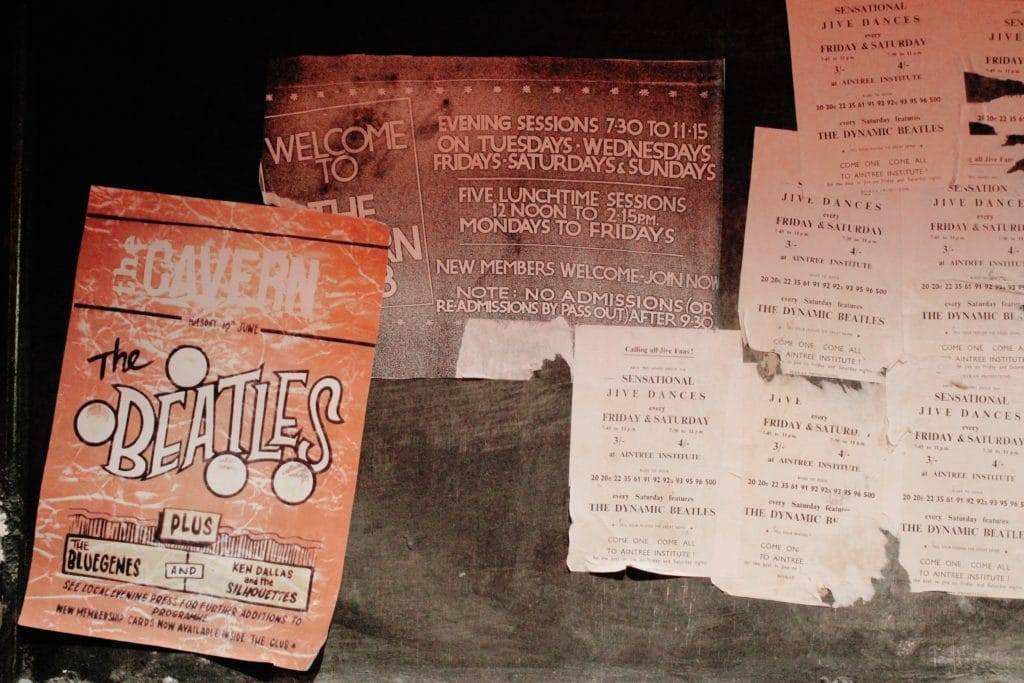Trends provide us with a rearview mirror of how world events have impacted B2B sales and what sales organizations need to do to adjust. In this post, we highlight four trends from LinkedIn's 2021 State of Sales report.
Though it was originally published in May of 2021, LinkedIn’s State of Sales report recently popped up in my news feed. Have you read it?
In their research, LinkedIn surveyed 400+ buyers and 400+ sellers asking them the same questions, and from the responses, LinkedIn identified seven sales trends likely to stay here forever.
I won’t cover all seven trends so as to not steal LinkedIn’s thunder, but rather I’ll highlight four of them and the impact on sales organizations. Ready? Let’s dive in.
Virtual selling is good for sellers and even better than buyers
At this stage, I doubt anyone is surprised virtual selling is emerging as a prevailing sales theme. I mean, who isn’t selling virtually right now? But let’s take a closer look into some of the less obvious impacts of selling virtually.
Remember waaaay back when, when the pandemic first hit? At the time, I was a month out from going to Adobe Summit, my previous company’s largest sales event of the year. Then suddenly, it was canceled, just like that. Months of planning, hundreds of hours of work preparing, tens of thousands of dollars invested— all gone with a moment’s notice. Since connecting in person was no longer an option, technology became the new BFF of sales teams— a shift of necessity, not necessarily of choice at the time. Yet buyers felt a little differently.
According to LinkedIn’s data, 50% of buyers say working remotely has made the purchasing process easier. Think about it— efficiencies gained from logging in vs. hosting an in-person sales appointment or traveling to an event. Not only was the process easier, but buyers became more self-sufficient, too. According to Gartner research, buyers are roughly halfway through the purchasing decision before reaching out to a sales rep. They are combing your website to learn about your product and its features, and 40% of buyers prefer self demos. Though the shift to digital purchases has been slowly evolving over time, the pandemic accelerated the trend. Now, buying virtually has become relatively seamless, which brings us to LinkedIn’s second sales trend.
Sales organizations must adjust to working in a remote world
“When the buyer changes, sales is forced to change. We often think of ‘sales’ as having to move virtual as the driver, but actually our buyers moved virtual.”
Craig Rosenberg, distinguished VP-Analyst, Gartner
What’s interesting is that the push to digital selling didn’t come from sellers— it came from buyers. With buyers preferring digital purchases and COVID not going away anytime soon, sellers had to adapt not only their processes but their tools, too. LinkedIn’s research shows 51% of sales organizations are adding new technologies, and 38% are investing in sales enablement. Sales organizations are acknowledging it’s time to improve sales efficiency, effectiveness, and transform how they sell.
Adapting is not just a matter of surviving, but rather one of thriving. Building a rapport with buyers and making an impression are radically different now vs. pre-pandemic. Gone are the days of wining and dining your prospect. Sales organizations are instead focusing their efforts on making a memorable digital impression— it’s become table stakes to capturing buyer attention. Consider that 63% of buyers are influenced by the quality and customization of your sales collateral and 26% are turned off by materials that aren’t visually appealing— your sales materials are now “speaking” for you, in lieu of a salesperson in the room. What’s the message you’re leaving with your prospects? Are you building trust or raising concern about your credibility? And speaking of trust, that’s another trend LinkedIn identified.
Sales technology provides the pathway to building trust
89% of buyers look for salespeople they trust. Again, not a shocking stat. But the silent trust hero? Sales technology. 54% of sellers say sales tools enable them to build stronger relationships with buyers and 54% also say sales tools help them close more deals. In fact, 69% of sellers say sales engagement software helps them to win more business.
“Top performing salespeople are willing to take the leap of faith and embrace new technologies in order to educate and engage with prospects and customers. This is key as more millennials now begin to enter the job market; these individuals have a new way of communicating. Salespeople need to change their ways and embrace new technologies or face being left behind.”
Paul Lewis, Global Social, Digital Marketing, and Sales Enablement Lead, Pitney Bowes
Did you catch that— “change their ways and embrace new technologies or face being left behind?” Ironically, many sales organizations are behind in embracing technology to help them improve their sales efficiency, effectiveness, and the buyer experience— all essential for remote selling success. An example of outdated practices: sending PowerPoint presentations as attachments, which are often large files and problematic to email. Or PDF proposals— static documents that can’t be read on a mobile device and require the recipient to download.
To thrive in a digital selling environment, your medium needs to match your message. For instance, if you’re claiming innovation and using outdated technology to pitch your prospect, it undermines your message. But, if you claim innovation and send slick, interactive sales collateral that stands out— it adds credibility to your message.
Modern sales technology, like web-based online proposal software not only helps to build buyer trust, but gives sales organizations a competitive advantage, as it provides a cohesive brand experience that is interactive, memorable, and easy for the buyer, from start to finish. If you’d like to see what I’m talking about, book a Qwilr demo. Our sales team will show you what’s possible and how Qwilr can transform your sales outcomes.
5 factors are influencing buyers
The last trend I’ll highlight is the factors that positively influence a purchasing decision. On the surface, none of these are revolutionary, but all should be accounted for in your sales materials. The influencers include:
Trust in the brand or product/service
Digital accessibility makes it easy to research a brand’s reputation, customer reviews, and public information. And the more a buyer researches you, the more they become familiar with your branding. An inconsistent experience suggests your brand lacks professionalism or attention to detail. On the flip side, when your sales collateral matches the look and feel of your website, it builds buyer confidence.
Trust in relationship with salesperson
There’s an old saying, “Trust is earned when actions meet words.” I couldn’t agree more.
LinkedIn’s research revealed 43% of buyers are influenced by their impressions of the salesperson. Sales responsiveness, speed, and accountability are huge—if you promised a quote by the morning, be sure to deliver as you said. Buyers are using the sales process as an indicator of what it might be like to work with your brand. If you’re slow in your responses now, it raises doubt as to your brand’s responsiveness and accessibility post-sale, should a problem arise.
Modern sales technology— specifically proposal software— helps to improve buyer trust by streamlining (even automating) creating proposals so you can follow up faster, without taking a huge chunk of your time. Additionally, proposal software like Qwilr, provides analytics of when and how your proposal is being viewed, for more thoughtful and focused follow-up. 44% of buyers responded that they want a salesperson to be tuned into their business needs— tailoring your communications based on their specific interests is one such way to demonstrate you’re focused on them.
Price
Price can sometimes be a sticky subject. From LinkedIn’s data, 47% of buyers are influenced by favorable pricing. Of course, “favorable” is subjective and may not translate to discounting.
In Qwilr’s 2021 Buyer Experience Study, 66% of buyers said they want to be empowered to select options in the pricing phase. From both LinkedIn’s and Qwilr’s research, the underlying theme is budgets are still tight and buyers can’t afford to make a mistake. Rather, the buyer needs to feel like they are getting the best value for their money and their purchase is right-sized for their use case and budget.
Traditional sales methods entailed a sometimes lengthy back and forth between buyer and seller, to negotiate just the right deal. Qwilr’s response is to eliminate that back and forth with interactive pricing features, so that the buyer can select the appropriate options, see the total cost, then sign— all in one step. When the buyer is in control, the buyer feels confident they got a “good” deal— or at least the right deal for them.
Return on the investment
Humans make decisions based on emotions but use logic to justify a purchase. Additionally, buyers want sellers to partner with them to make the best decision possible. Forrester research cites that 74% of buyers choose to work with sales reps who can demonstrate ROI. If you want to seal the deal, it’s not enough to talk ROI, you must prove it.
An ROI calculator visualizes the impact of your product or service and validates that your solution is right for them. I also think of ROI calculators as an exclamation point to your sales proposal— you’ve already provided details about your company, your product and features, now make your claims indisputable by allowing the buyer to see and adjust variables on an ROI calculator. Understanding how your product or service improves your buyer’s current situation is powerful! To learn more about ROI calculators and how to use one in your sales proposals, book a demo with the Qwilr team.
Service after the sale
This trend doesn’t need a lot of explanation, but don’t forget once a customer is signed, the relationship is still growing. Serving your customer well will open doors for future product expansion and cross-selling opportunities. You’ve worked hard to get the customer, do the same post-sale and you’ve likely got a customer for life.
Summary
LinkedIn’s State of Sales report includes more trends and detail; I encourage you to download and read it in its entirety. Trends provide us with a rearview mirror of how world events have impacted sales and what’s likely to continue in 2022. Embrace the information, but even better— action it.


